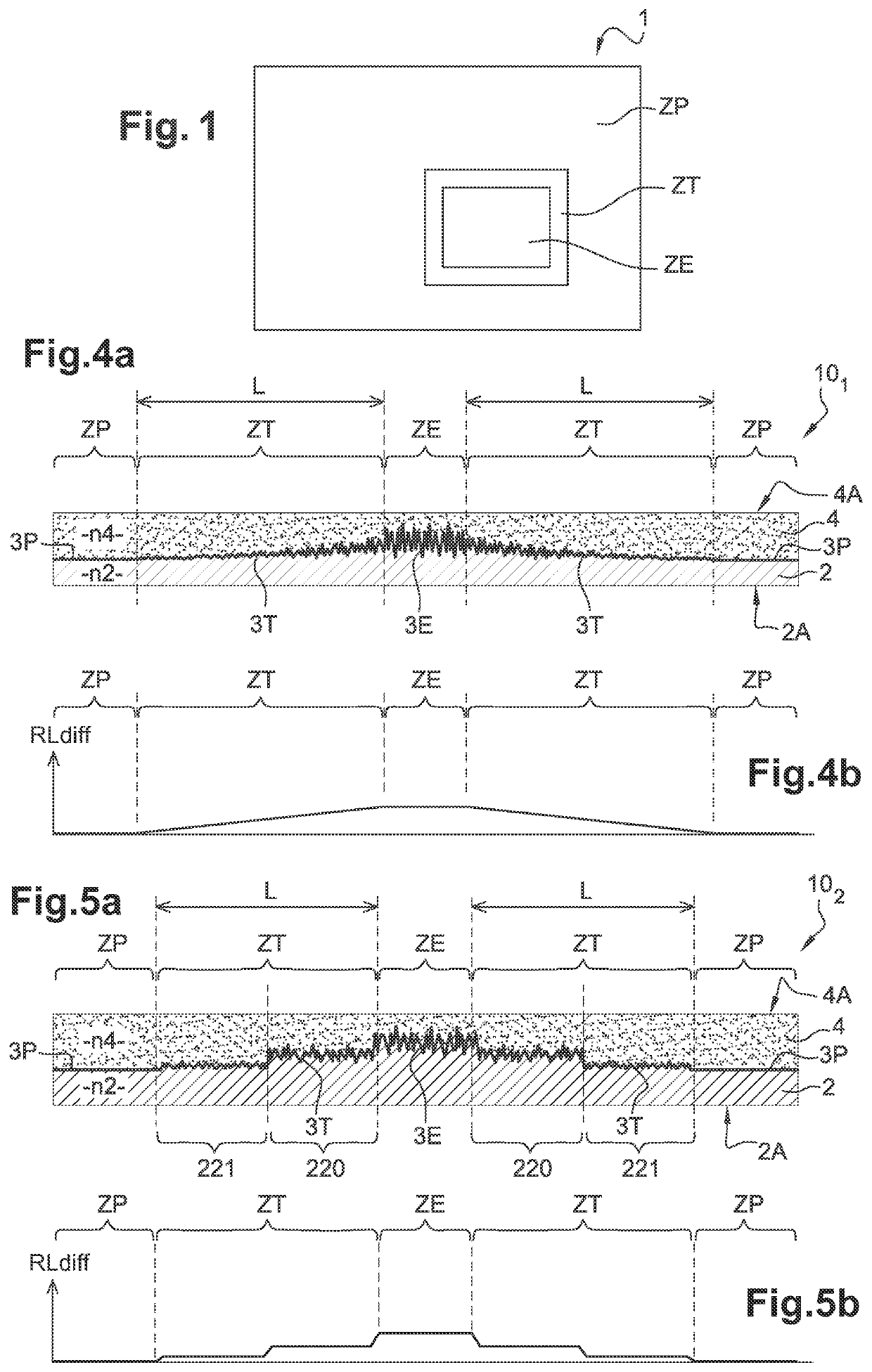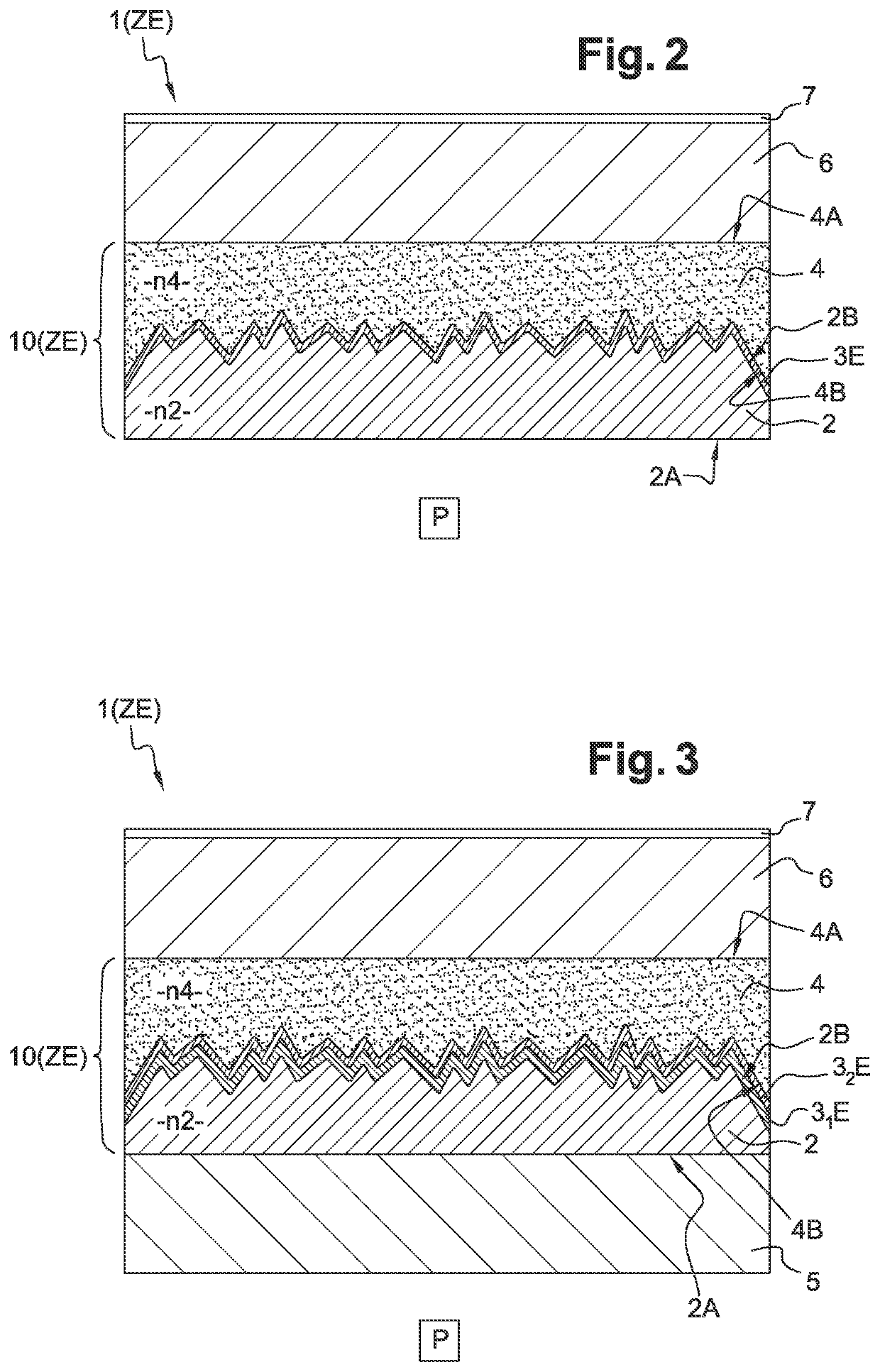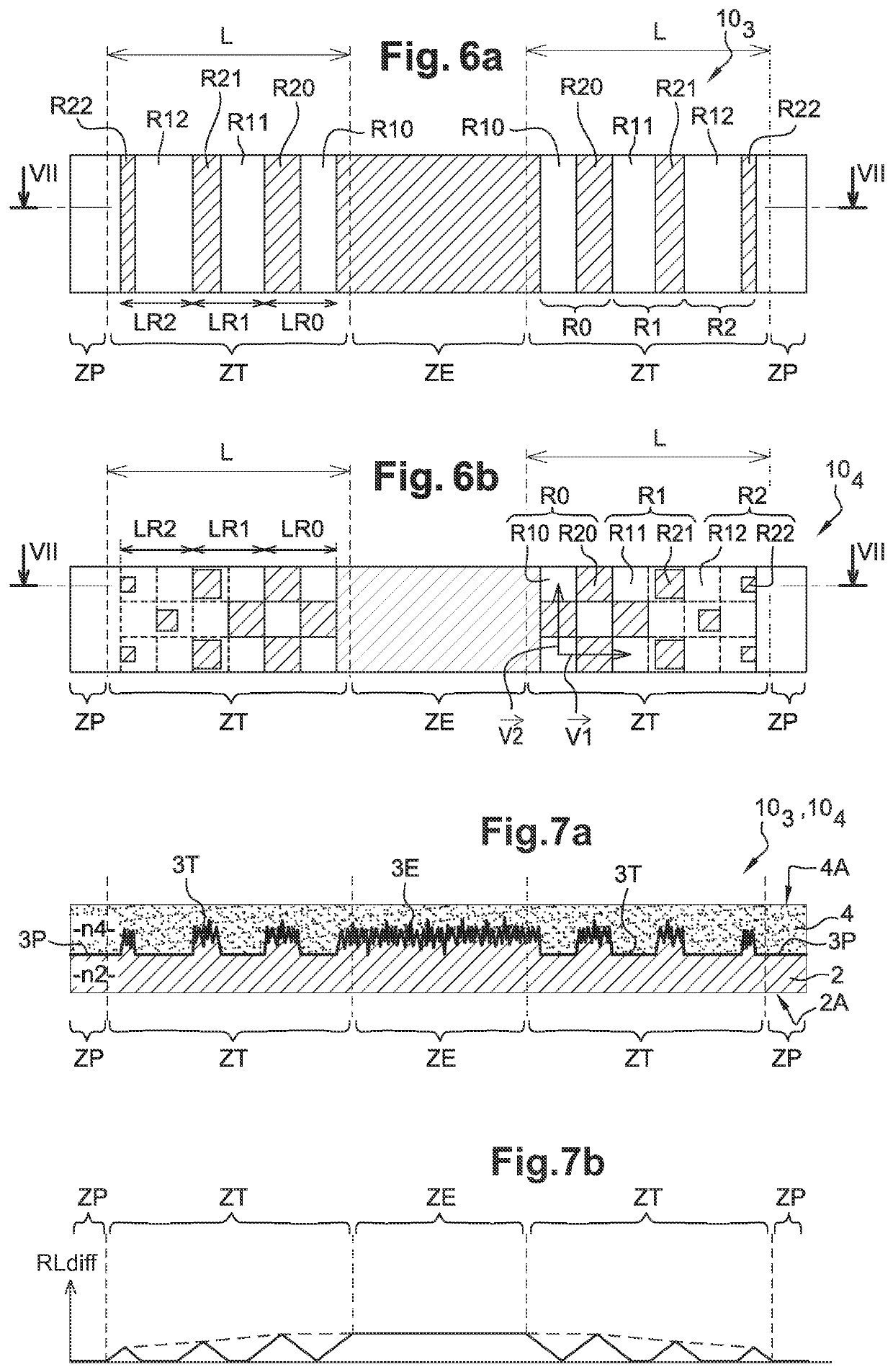Transparent layered element comprising a display region
a technology of layered elements and display regions, which is applied in the direction of instruments, furniture parts, other domestic objects, etc., can solve the problems of limiting the clarity of view, not allowing images to be formed, and not conceivable to use transparent standard glazing as projection screens, etc., to promote diffuse reflection, uniform overall visual appearance, and good luminosity of images projected on the screen zone
- Summary
- Abstract
- Description
- Claims
- Application Information
AI Technical Summary
Benefits of technology
Problems solved by technology
Method used
Image
Examples
first embodiment
[0138]In a layered element 101 shown in FIGS. 4a and 4b, the decrease in the variation of the diffuse light reflection in the transition zone ZT going from the screen zone ZE to the peripheral zone ZP is obtained by continuous variation of the roughness profile of the middle layer 3T of the transition zone ZT, in the sense of a decrease of the mean square slope Rdq(ZT) from the screen zone ZE to the peripheral zone ZP, whereas the middle layers 3E, 3T, 3P all have an identical thickness and an identical chemical composition.
[0139]As an example, referring to FIG. 4a: [0140]in the screen zone ZE, the middle layer 3E is textured, with a mean square slope Rdq(ZE) of the order of 5°;[0141]in the peripheral zone ZP, the middle layer 3P is smooth, with a mean square slope Rdq(ZP) of less than 0.2°;[0142]in the transition zone ZT, which has a width L of 2.5 mm, the middle layer 3T is textured with a mean square slope Rdq(ZT) that decreases continuously, from the value of the mean square slo...
second embodiment
[0143]In a layered element 102 shown in FIGS. 5a and 5b, the decrease in the variation of the diffuse light reflection in the transition zone ZT going from the screen zone ZE to the peripheral zone ZP is obtained by stepped variation of the roughness profile of the middle layer 3T of the transition zone ZT, in the sense of a decrease of the mean square slope Rdq(ZT) from the screen zone ZE to the peripheral zone ZP, whereas the middle layers 3E, 3T, 3P all have an identical thickness and an identical chemical composition.
[0144]As an example, referring to FIG. 5a: [0145]in the screen zone ZE, the middle layer 3E is textured, with a mean square slope Rdq(ZE) of the order of 5°;[0146]in the peripheral zone ZP, the middle layer 3P is smooth, with a mean square slope Rdq(ZP) of less than 0.2°;[0147]in the transition zone ZT, which has a width L of 5 mm, the middle layer 3T is textured with a mean square slope Rdq(ZT) that decreases in two successive steps 220, 221 such that: for step 220...
third embodiment
[0149]For the layered element 103 shown in FIG. 6a, which corresponds to a reduction of the density of portions with diffuse reflection by alternation of smooth bands and textured bands:[0150]in the screen zone ZE, the middle layer 3E is textured, with a mean square slope Rdq(ZE) of the order of 5°;[0151]in the peripheral zone ZP, the middle layer 3P is smooth, with a mean square slope Rdq(ZP) of less than 0.2°;[0152]in the transition zone ZT, which has a width L of 6 mm, the roughness profile of the middle layer 3T is discontinuous in the direction joining the screen zone ZE to the peripheral zone ZP.
[0153]More precisely, the transition zone ZT comprises three successive regions R0, R1, R2 going from the screen zone ZE to the peripheral zone ZP, where each region is formed by combining two bands comprising in each case a smooth band R10, R11, R12 closer to the screen zone ZE, where the middle layer 3T has the same roughness profile as the peripheral zone ZP, i.e. a mean square slo...
PUM
| Property | Measurement | Unit |
|---|---|---|
| Fraction | aaaaa | aaaaa |
| Angle | aaaaa | aaaaa |
| Thickness | aaaaa | aaaaa |
Abstract
Description
Claims
Application Information
 Login to View More
Login to View More - R&D
- Intellectual Property
- Life Sciences
- Materials
- Tech Scout
- Unparalleled Data Quality
- Higher Quality Content
- 60% Fewer Hallucinations
Browse by: Latest US Patents, China's latest patents, Technical Efficacy Thesaurus, Application Domain, Technology Topic, Popular Technical Reports.
© 2025 PatSnap. All rights reserved.Legal|Privacy policy|Modern Slavery Act Transparency Statement|Sitemap|About US| Contact US: help@patsnap.com



